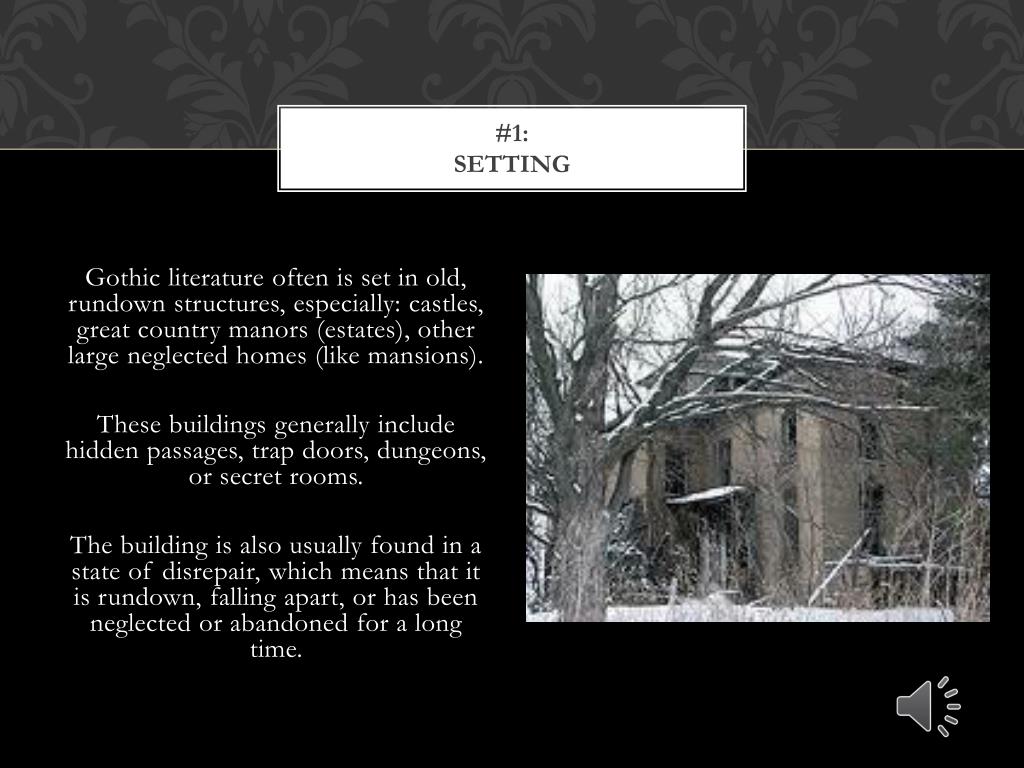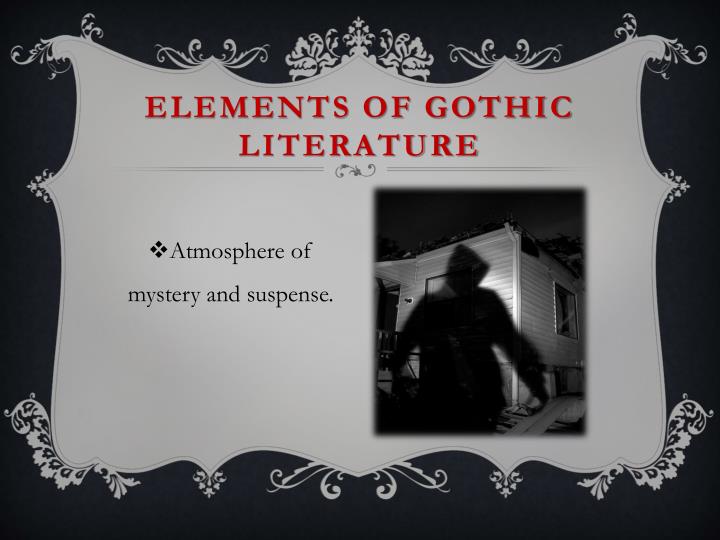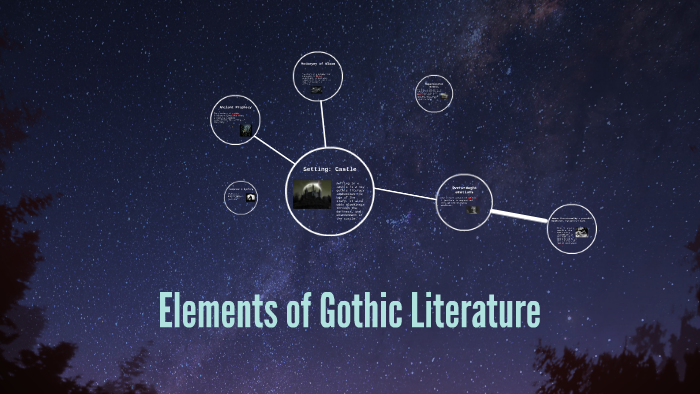

External focalization is when the action is seen from outside, it is not used in fantastic.įor example in Henry James’ The Turn of the Screw (1898), there is an introduction, a frame-story that introduces the main story : a governess in Victorian England has to take care of Miles and Flora. If the narrator is omniscient, there is no suspense and no fantastic because there is no room for doubt. In third-person narratives, we perceive what the character perceives, as well as his thoughts (internal focalization).
#GOTHIC LITERATURE ELEMENTS HOW TO#
There is an interrogation of the reader when the character is not sure whether something happened or not, and how to interpret it. On the other hand, it makes the story more real and true because it is reinforced by different witnesses and different points of view.Īccording to Todorov, the best strategy is the first-person narrative (using the personal pronoun “I”) as it is the best way to present a fantastic story for we identify with the character. When you see the story through different angles, you suspend your disbelief and take distanciation. Then, there is Lucy, a friend and vampire, and Dr Van Helsing, who kills vampires. The second character is Mina Harker, Jonathan’s wife, with whom Dracula fell in love. The first of these journals is by Jonathan Harker, who went to Transylvania. Cognitive estrangement in fiction involves using a person’s ignorance or lack of knowledge to promote suspension of disbelief.įor example, in Dracula (1897) by Bram Stoker, the book is presented as fragments of several characters’ diaries. Suspension of disbelief often applies to fictional works of the action, comedy, fantasy, and horror genres. With multiple narratives, we obtain what Samuel Taylor Coleridge called a “willing suspension of disbelief” through verisimilitude, suggesting that if a writer could infuse a “human interest and a semblance of truth” into a fantastic tale, the reader would suspend judgment concerning the implausibility of the narrative. Again the Fantastic is found in this hesitation – once it is decided the Fantastic ends. The Fantastic can also represent dreams and wakefulness where the character or reader hesitates as to what is reality or what is a dream. Tzvetan Todorov, The Fantastic: A Structural Approach to a Literary Genre

Third, the reader must adopt a certain attitude with regard to the text: he will reject allegorical as well as “poetic” interpretations. Second, this hesitation may also be experienced by a character thus the reader’s role is so to speak entrusted to a character, and at the same time the hesitation is represented, it becomes one of the themes of the work - in the case of naive reading, the actual reader identifies himself with the character. The fantastic requires the fulfillment of three conditions.įirst, the text must oblige the reader to consider the world of the characters as a world of living persons and to hesitate between a natural or supernatural explanation of the events described. They are trying to make her mad to get her heritage. Emily also investigates the mysterious relationship between her father and the Marchioness de Villeroi, and its connection to the castle at Udolpho.Įmily conceives strange things: she can hear voices such as her dead father’s, see moving paintings, or see a man appear from nowhere in her room. Emily’s romance with the dashing Valancourt is frustrated by Montoni and others. Aubert, a young French woman who is orphaned after the death of her father.Įmily suffers imprisonment in the castle Udolpho at the hands of Signor Montoni, an Italian brigand who has married her aunt and guardian Madame Cheron. there is a chiaroscuro : a contrast between light and darkness.įor example, The Mysteries of Udolpho is a novel set in 1584 in southern France and northern Italy which focuses on the plight of Emily St.gloomy and large elements belong to the sublime,.the frail, young and fragile heroine usually falls in love with a nice guy,.there is a contrast between the sublime and the beautiful,.The Private Memoirs and Confessions of a Justified Sinner (1824) by James Hogg.Melmoth the Wanderer (1820) by Charles Maturin.

The Mysteries of Udolpho (1794) by Ann Radcliffe.


 0 kommentar(er)
0 kommentar(er)
